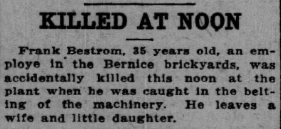
On the coast of Cuba’s Santa Clara province, near Cape Maysi, lie caverns carved into the shoreline by centuries of relentless waves. These caves, stretching for miles, have long served as hiding places for man-eating sharks. Fishermen and travelers have encountered these predators, and one Englishman nearly met a grisly fate after steering his boat into a cavern to escape the heat, only to find himself under attack by the sharks that swarmed the waters.
These caves also bear a darker history. Cuban insurgents captured by Spanish guerrillas near Baracoa were condemned to death in one of these shark-infested pools. Bound and helpless, the prisoners were thrown into the water, where they were said to have been devoured.
Spanish Ferocity

On the coast of the Santa Clara province, in Cuba, just a little south of Cape Maysi, on the extreme eastern end of the great island, where the shore is high and shelving, there are many caverns extending far up under the land, says the Boston Courier.
I have often seen them while steaming close along the Cuban shore, bound down the Windward Passage, toward Jamaica. These caverns honeycomb the shores for miles, and are supposed to have been produced by the ceaseless beating of the waves during many centuries.
They are favorite lurking places for the man-eating sharks that infest these waters. One of these caves, a few miles east of Baracoa, is of unusual size, and it is related that an Englishman, while fishing in an open boat off shore one day, seeing the cavern, steered his boat into it to escape the burning heat of the tropical sun. Finding good fishing there, he enjoyed the sport until tired of it, when, having no fear of being imprisoned by the tide, which is so slight as to be imperceptible in the Caribbean, he pushed his boat still further into the cave, intending to explore it to the end. He had not gone far before the boat was nearly capsized by a tremendous shock from beneath. Immediately following the shock the water began to boil and foam around him, and the boat was attacked from all sides. He was not long in discovering that the water in the cavern was literally alive with sharks. They fiercely continued to attack the boat, ramming it with their noses, and making frequent efforts to spring over the gunwale.
Frightened nearly out of his wits, and expecting momentarily that the boat would be overturned and that he would be overturned, and then torn to pieces by the sharks, he endeavored to push his boat back toward the opening, but, in his excitement, and on account of the rocking of the boat as the sharks shot under and around it, he dropped both his oars. Nothing remained now but to try to work the boat back toward the opening by pushing with his hands against the roof of the cavern, which he could just reach; but he soon discovered that, as he moved toward the entrance, after going a few feet, he would be unable to reach the roof.

Then, in sheer desperation, he began to push the boat further into the cave, the sharks all the time pounding at the bottom of the boat and making the water boil around it. As he advanced into the cave, the boat came nearer to the roof until the gunwales scraped it as he pushed it along. Still he continued pushing with his hands against the roof, not knowing what minute he might reach the limit of the cavern and find himself a prisoner, unable to go either forward or back, and at the mercy of the man-eaters.
But the boat continued to move, until suddenly a light appeared ahead, and in a moment he was out in the bright sunshine. The boat floated in a circular pool, and the ground rose all around him, steep banks, 20 feet high. The pool was at the bottom of the huge bank. Springing from the boat he ran up the bank, overjoyed to escape from his perilous position.
A league to the eastward of Baracoa, about two years ago an insurgent band of Cubans had met a company of Spanish guerrillas, and had been repulsed. Several of the Cubans were taken prisoner, and the guerrillas were about to machete them, when one of them, next to the chief in command, said: “Let us throw the Cuban vermin into the den of sharks; for machete-ing is too good for the dogs.”
A murmuring assent arose from the cruel gang, and the Cuban prisoners were forthwith marches, bound, to the brink of the pool. Their legs were firmly bound, their arms being tied behind their backs, and one by one they were pushed into the pool. The instant the first victim struck the water a swift swirl encircled him, and his cry of horror was quickly silenced as he was dragged under by a hungry shark.
They the pool began to boil like a cauldron, but not a fin, or head, or tail was visible. As each prisoner, pinioned hand and foot, was thrown in, he disappeared in an instant. After the last man had been fed to the sharks the water became calm, but it was crimson with the blood of the patriots whose lives had been so cruelly sacrificed on the alter of Cuba Libre.
Source: Wheeling Sunday register. (Wheeling, W. Va.), 10 April 1898.

